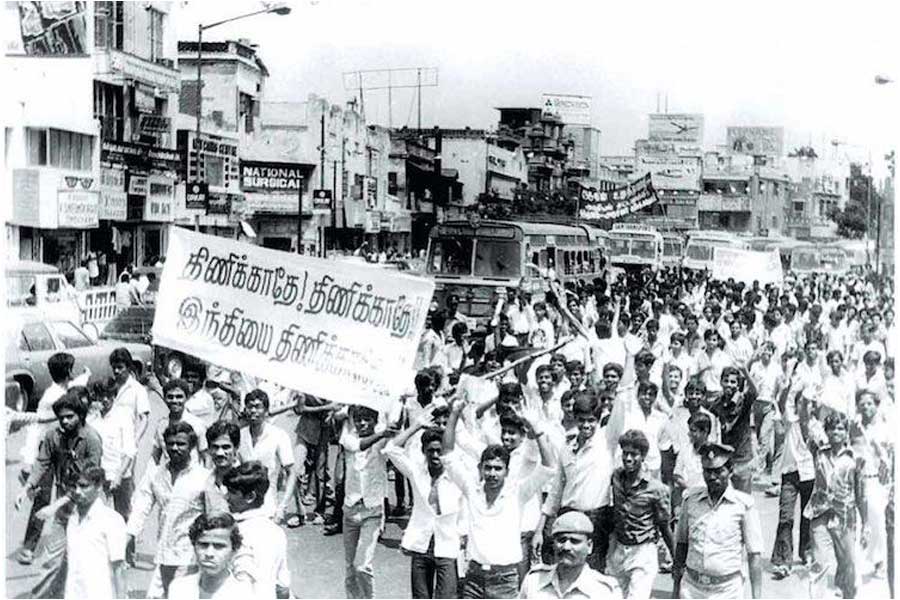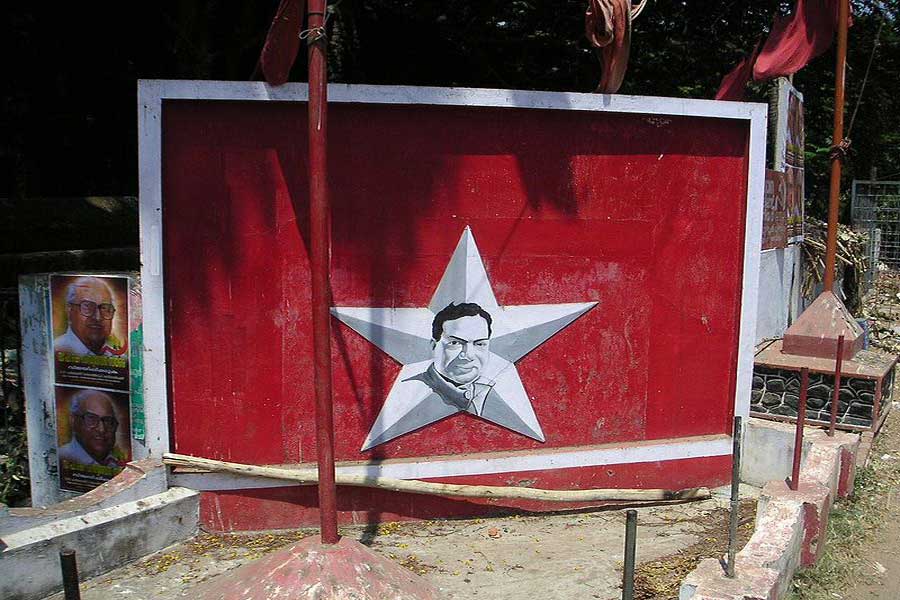Actor Rajinikanth’s dissent against Hindi imposition could come as a rude shock to the BJP leadership in Delhi. Not that even his support would have meant much in Tamil Nadu, steeped in anti-Hindi sentiments. If anything, Rajnikanth’s rather belated reaction to Union Home Minister Amit Shah’s clarion call only indicates he played safe after gauging public mood.
Rajinikanth has had little hesitation in siding with the state, say during the anti-Sterlite agitation or, in supporting the Modi regime’s clampdown in Kashmir. Apparently, he too draws a line. Tamil Nadu will forever remain a stumbling block for New Delhi on that count.
In a way, Rajaji (C Rajagopalachari) could be held partially responsible for the making of the anti-Hindi Tamil psyche. Back in 1937, when the Congress swept to power, even before assuming office as the Premier of the then Madras Presidency, he solemnly announced his government’s intentions to promote Hindi.
The Indian National Congress and Mahatma Gandhi had been assiduously championing the cause of Hindi as a link language and repeatedly made appeals to the Tamils to learn the language. Neither seems to have realized the deep distrust of Hindi among the Tamils due to a variety of factors. To be fair to Rajaji, he was only being a loyal Congressman. He argued that when Hindi became the official language (as he believed it would), he didn’t want the Tamils to be left behind in the national scheme of things.
Unfortunately for Gandhi and Rajaji, even at that time Hindi had come to be seen as the language of the North, and derivatively, of the Brahmins as well. Periyar E V Ramasamy had already conscientised the non-Bhramins against the blatant injustice of domination by Brahmins, a miniscule percentage of the total population deriving legitimacy for its domination from the Shasthras. Periyar had inevitably focused on the Puranas as the source of all mischief, and since the Puranas and Vedas were in Sanskrit, that language too became a target of widespread scorn.
In fact, very few Brahmins knew Sanskrit well, except for the ritual incantations. But the exposure to Sanskrit from a very early age seemed to make the Brahmins take to Hindi too with avidity. With both Sanskrit and Hindi having become closely identified with the community and Rajaji, a Brahmin, moving on to make Hindu compulsory in schools in high school, a confrontation became inevitable.
Big rallies and public meetings were held all over the state. Rajaji remained adamant; there was police crackdown followed by a couple of deaths. The order was eventually reversed only after the Rajaji government bowed out. It was at the time of the first anti-Hindi agitation Periyar threw before the public the idea of a separate Tamil/Dravidian land. And thus the Tamil assertion and opposition to Hindi grew symbiotically, so to say.
The Congressmen didn’t seem to have learnt any lesson from the 1938 protests and kept trying to make the study of Hindi compulsory in some form, only to retreat in the face of strident opposition. 1965 witnessed a volcanic eruption as Hindi became the sole official language following the Constitutional mandate on the adoption of Hindi as the official language. It was a spontaneous outburst by students, who feared that they would lose out in the all-India competitive examinations, apart from being loathe to the idea of accepting a Sanskrit-derivative as the official language.
If it was Tamil scholars who stood in the vanguard in 1938, the self-respect movement of Periyar slowly took over popular imagination. Nearly three decades later, students roused by Tamil nationalism took to the streets, the Dravida Munnetra Kazhagam (DMK) making the most of it. In the event, scores of lives were lost, property destroyed, and the state and central governments had to beat a hasty retreat—a new law was passed ensuring continuance of English as administrative language.
The Congress debacle in the Assembly elections in 1967 could be partly attributed to the thorough mishandling of the anti-Hindi agitation. For the Dravidian parties that began to dominate the political landscape, the issue remains at the core of their agenda.
Although Amit Shah himself seems to have executed a somersault of sorts, the BJP could be expected to renew it at a later point. Clearly, the Hindi-Hindu-Hindustan agenda of the RSS would take a while materializing if Tamil Nadu remains strident in its opposition to Hindi.







